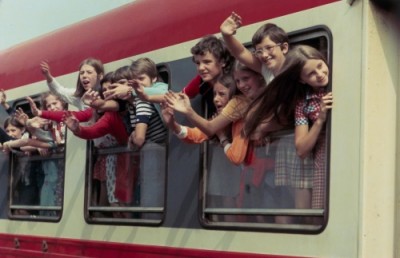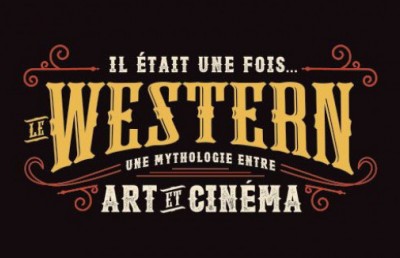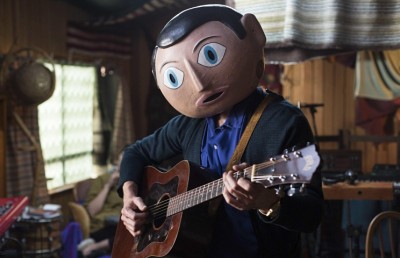The Best Films of 1917
From Chaplin to Feuillade
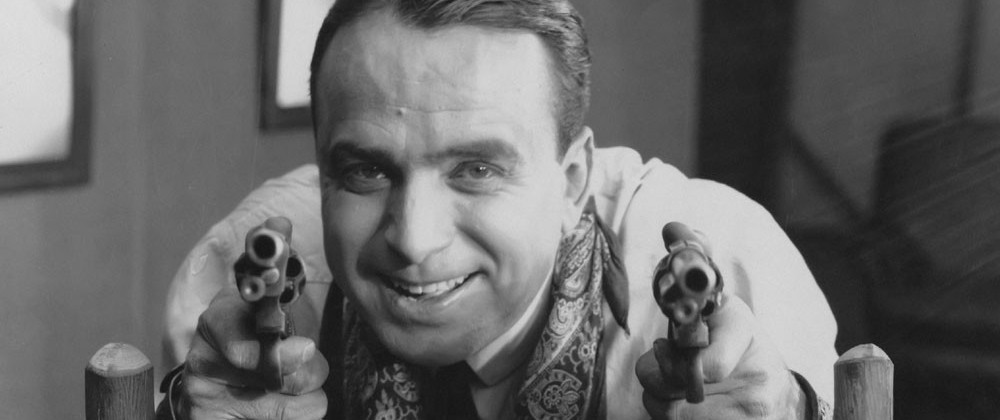
Inspired by David Bordwell and Kristin Thompson’s picking the best films from 90 years ago, I am proposing a top-ten film list from 100 years ago, for the second time. The period during the “Great War” from 1914 to 1917 was arguably the most important for the development of U.S. narrative, feature-length film, especially (analytical) editing within scenes. Of course, it was also the period when U.S. films began to dominate the world market, with some European film industries limited in their production by the effects of the war (including Italy, the UK and Russia). 1917 was the year when the U.S. finally entered the war arena, but this didn’t slow down the making of films on the East and West coasts. According to Guinness’ statistics, 687 U.S. features were made in 1917, and 841 in 1918 (a figure only topped in 1921 with 854). 1 Again according to Guinness, these numbers could have been equal to the total production in the rest of the world put together (although they provide no figures for France and Japan in these years).
Not surprisingly, almost half of the films that I have chosen were made in the U.S. In my view, Charles (Charlie) Chaplin peaked as a filmmaker and actor/writer/producer of shorts during his time working for Mutual, and his finest work was The Immigrant, a two-reeler. In this film, we can find many instances of sight gag comedy making sophisticated advances on the “slapstick” of the Mack Sennett years. One of the most famous instances is where Charlie, with his back to the camera is leaning over a ship’s railing. On the deck of the ship, the camera has been tilting to represent the rocking in stormy seas, so we assume that Chaplin is throwing up, but it is revealed that he has been fishing, when he turns to face the camera and shows his catch. Part of the very large budget ($100,000) was spent on constructing a dining room set that was mounted on a roller, so that Chaplin would swing back and forth while trying to eat. Perhaps the most remarkable sequence of (four) shots comes when the ship is approaching New York and we see the Statue of Liberty moving from right to left in the background/cut to a close-up of Chaplin/cut to a continuation of the tracking shot showing the Statue of Liberty/cut to a medium shot of passengers including Chaplin caught behind a rope; a brilliant critical questioning of the “freedom” that will greet the poverty-stricken immigrants. Although the average shot length (ASL) of The Immigrant is over 9 seconds @ 20 frames per second (fps), because the film contains a number of long takes that allow for a full appreciation of Chaplin’s comic body movements and gestures, it also contains parallel editing, some point-of-view exchanges, including at least eight reverse-angle cuts, and a number of cuts on movement, all indicating that contrary to the general view on Chaplin as a film director, he was very much engaged in developing the “classical” style. The Immigrant is my #1 choice as film as the year, and two other Chaplin Mutuals could easily make a top-20 of 2017, Easy Street and The Cure.
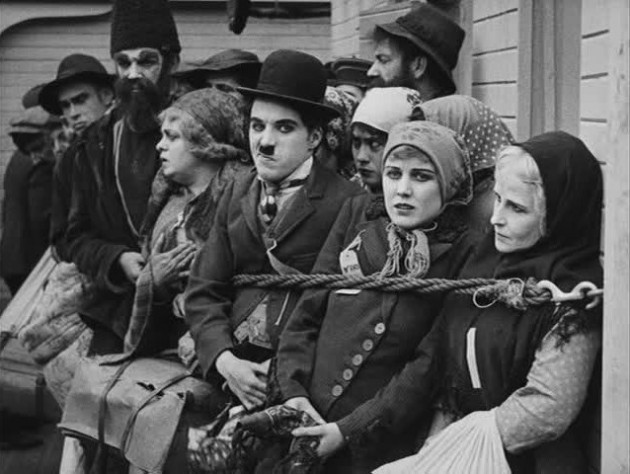
The Immigrant
Whereas D.W. Griffith has always been credited for laying the foundations of the “Classical Hollywood Style” in developing parallel editing/cross-cutting as well as analytical editing within spaces and between adjacent spaces, it is the films starring Douglas Fairbanks from 1916 and 1917 that display the most extraordinary editing pace, especially where the actor’s movements in and out of the frame seem to necessitate fast editing in order to keep up with him. In combining my own statistics with those of Barry Salt, providing a sample of 15 American films, one can deduce that the average shot length (ASL) in 1915 was probably more than 11 seconds 16fps, but by 1917 it had dropped to below 7 seconds (for 25 feature films).2 2 Of the two Fairbanks films I had analyzed, I calculated the ASL of _The Good Bad Man_ (Triangle/Fine Arts, 1916), directed by Alan Dwan to be 6.2 seconds, with _Wild and Woolly_ (Artcraft, 1917), produced by Fairbanks and directed by John Emerson, having an astounding 3.9 secs ASL 16fps. Salt notes that Dwan’s A Modern Musketeer (Artcraft, 1917) has an ASL of 4 secs, Yuri Tsivian, who founded the Cinemetrics website, where the results of statistical analyses, including Salt’s have been posted, also measured this film and concurred with Salt’s figure (ASL 4.1 secs), while Tsivian measured an ASL of 5.1 secs. for the 2-reeler, The Mystery of the Leaping Fish (Triangle/Fine Arts, 1916), directed by Emerson.
Wild and Woolly is a comedy/western. The character that Fairbanks plays is typically a well-to-do New Yorker who imagines a more exciting life for himself to suit his desire for adventure and success. Cleverly, the script’s setting is contemporary —original story by Horace B. Carpente— and the West is no longer the “wild” country that Jeff’ (Fairbanks) dreams of so his even richer father pays the residents of an Arizona town to stage a wild western scene for him, which backfires when the local “indians” take umbrage. The dynamic style of Wild and Woolly can clearly be attributed to Fairbanks as the producer of his own new company’s films (Douglas Fairbanks Pictures), but also to Emerson, and the writer of the snappy intertitles, Anita Loos as well as the cinematographer Victor Fleming (best known for his direction of The Wizard of Oz and Gone with the Wind in 1939). As well as being a quintessential example of Fairbanks, the action comedian in both style and substance, Wild and Woolly is an excellent example of the beginnings of (the misnamed) “invisible editing,” with many cuts to slight changes of camera angle and scale, always on some kind of movement in the frame. It was surely an influence on the Soviet montagists of the 1920s. Although shot on location in Arizona and California (but definitely not Hollywood) Wild and Woolly also used Central Park for Jeff’s introduction to horse riding in preparation of becoming a cowboy, and was studio shot in Fort Lee, New Jersey, which was still a major film production centre in the Eastern U.S. Indeed another Fairbanks film of 1917, Reaching for the Moon (Artcraft), featuring the same team of Emerson, Loos and Fleming, which I first saw, when I projected it in 1978 at NYU for Bill Everson’s course, “East Coast Production,” did feature a few shots taken in Hollywood, but many more New York location shots. In his introduction to the film, Everson noted that “Fairbanks liked New York a lot and hated California,” while he “wrote NY locations and plots into his films to get back there.” He also argued that Fairbanks “needed a big city” in order to create a “go ahead atmosphere” for his character. 3
At the time, the most critically acclaimed director working at Fort Lee was Maurice Tourneur, and his work there stands the test of time. He was a fine director of acting, as is demonstrated by his handling of Mary Pickford in The Pride of the Clan (Artcraft, 1917) and, especially, Poor Little Rich Girl (Artcraft, 1917), perhaps the last time that the actress is truly convincing as an 11-year old waif. Both films were shot by Lucien Andriot and John van den Broek, whom Tourneur had brought with him, along with art director Ben Carré, from the World Film Corporation, and both films are replete with sophisticated framing and a great sense of depth on interior sets as well as exterior locations. The Artcraft Paragon studio is where Tourneur would later be working although he had initially made his name at World’s first, Peerless studio in 1914 with a short film Mother, and three features The Man of the Hour, The Pit and The Wishing Ring, which is one of the very best films of its year. No fewer than nine Tourneur-directed features appeared in 1917, including The Whip (World), a beautiful, well-edited horse racing picture, and one of my favourite Tourneur films of any year, A Girl’s Folly (World). Wild and Woolly is reflexive in its amusing pastiche of the western genre, but A Girl’s Folly presents a documentary-like view of studio filmmaking, including the making of a western on sets and on location, a film-within-a-film. Tourneur himself appears in some shots, as a film director, and we believe that we can spot Joseph von Sternberg in the role of a cameraman. (He was already working for World in some capacity.) As with many of Tourneur’s films, A Girl’s Folly is charming: three or four young actresses appear regularly on the Peerless Studio film set, and we later glimpse groups of older women, dressed as maids for a historical picture. Mary (Doris Kenyon), a young country girl reads romantic novels and imagines a handsome troubador, who appears in superimposition. She encounters the film crew on location for the western, thinking the “indians” are real, and her dreams look to be realized when she is invited by the principal actor, Kenneth Driscoll, played by Richard Warwick (a major star at World) to come to New York (actually New Jersey). While Mary prepares to leave home, a scene of her four young female friends being frightened by a mouse is intercut, diverting attention away from the film’s narrative. A title card notes that this is a “real” adventure, rather than a “romantic” one. Indeed, throughout A Girl’s Folly, Frances Marion’s intertitles, comically illustrated by a.d. Carré (uncredited) often provide irony. For example, when Driscoll says to Mary, “You know I love you…” there is a drawing of a devil courting a girl on the card. Later, when he stages a dinner for Mary —we are not sure what he is up to, with some kind of clown waiting in the wings (literally)— the (ever present) four other women at the table are now of various ages, and then Mary’s mother arrives, and takes her away from the imaginary romantic scene. Prior to the film’s final shot of Mary, her mother and country boyfriend, Johnny Applebloom (Chester Barnett) walking into the background, after one male observer says “Ain’t it Romantick,” the final intertitle reads “Romantic nothin’, That’s Movin’ Pictures.” Our interest is often drawn away from potential romances to enjoy the operations of a studio or other incidental or unimportant incidents e.g., the mouse scene, or to ponder Mary’s thoughts of country life intercut with her faceher uncle sleeping, a dog sleeping, a bird, a frog, couples walking in the woodsand where cross-cutting is based on mood rather than narrative incident. Interestingly, Clarence Brown, who was Tourneur’s assistant at the time, was credited as the film’s editor. Fortunately, A Girl’s Folly was saved after some of the only surviving nitrate print had decomposed, but unfortunately, we will probably never again be able to see the film clearly, and in its entirety.
The fourth U.S.-made film on my list is a truly remarkable western directed by Frank Borzage, Until They Get Me (Triangle). This is the first of six films on my list to have been shown at the 31st edition of Il Cinema Ritrovato in Bologna (24 June-2 July, 2017), and one of four that I had never seen before. The screening that I attended, for which Antonio Coppola provided piano accompaniment, was my highlight of the festival. Sixteen-yr. old Pauline Starke is Margy, a tomboy orphan, who is so badly treated by her male guardian that she is compelled to leave home. For this Montana setting, Borzage and his cinematographer, C.H. Wales executed some amazing shots of the mountainous landscape taken through the barn and house doorways. (Could they have built sets on location?) The other storyline involves Kirby (Jack Curtis) who is dashing to Alberta to join his wife, as she is about to give birth. When his horse can no longer carry him, he requests a horse from a rustler, whom he shoots and kills when his wish is not granted. When he reaches his home, his wife is already dead, but his newborn son is alive and is nursed by a woman, who is clearly aboriginal, as is her husband —unusually, they were not played by white actors. Kirby escapes the clutches of the North West Mounted Police (NWMP), and on one of his annual visits every September 7th to see his son, he helps the fleeing Margy onto his horse and they cross the river border together. In Canada, she is taken in by the Mounties, and recognizes a picture of Kirby. She inadvertently leads the policeman whom she loves, Selwyn (Joe King) to the outlaw. The closing scene of Until They Get Me, involving a senior police officer, Selwyn, Margy and Kirby is extraordinary. In it, we get to see all four characters in single shots glancing from one to the other. By then, we have come to sympathize with the ostensible villain, Kirby, and we wonder if the NWMP officers who seem to be fair in their dealings are going to reprieve him; we also wonder if Selwyn will finally admit his love for Margy. There is a great deal of ambiguity in the cycling of glances. Eventually, she drags him outside by a string of his uniform, and the title card reads, “He always gets his Man.” Until They Get Me seems far more modern in both its representation of gender, race and criminality and its visual style than other silent westerns of the period. If I hadn’t seen Borzage’s great film, I would probably have ranked John Ford’s Straight Shooting (Universal) in my top ten. Like Borzage, Ford had yet to completely work within the developing “180 degree rule” system of editing, but there is at least one great sequence in his oldest surviving film as a director —a shoot-out in the western town’s main street that established a model for the genre. In short, it was a forerunner to the Hollywood “classical” western in ways that Borzage’s film wasn’t.
High on my list is Louis Feuillade’s follow-up serial to Les Vampires (1916), Judex (Gaumont, France), released in January 1917 after some limited screenings in Paris the previous December, which went on to become the director’s most popular work, in his home country. Not nearly as violent or fantastic as its predecessor, Judex makes excellent use of natural settings: Château-Gaillard overlooking the River Seine for the Château Rouge underground hideout in the first half and the coastal South of France in the last four episodes, where interiors were illuminated only by sunlight entering through windows and doorways —a beautiful effect. If anything, Musidora as Diana Monti aka Marie Verdier (a governess) is more devilish than before. She will do anything for money (mostly kidnapping), and gets her henchmen to kill at will. Her nemesis, Jacques de Tremeuse aka Judex, played by the tall and handsome René Cresté, whose cape and top hatted Judex attire made women swoon, also convincingly wore a beard and grey wig to pose as an “uncle” to the heroine, Jacqueline (Yvette Andréyor), whom he secretly loves. As Jan-Christopher Horak writes in his notes to the 2004 Flicker Alley DVD release, Judex can be seen as a “mixture of detective serial and family melodrama,” where a “villain can be redeemed because he loves his family.” 4 There is also comedy, which is provided by Marcel Lévesque as a bumbling detective Cocantin (reprising a similar role in Les Vampires), and action, provided by his girlfriend and former circus performer, Miss Daisy Torp, “The Water Goddess,” who swims her way to rescue Judex, who (in a kind of ongoing motif for all of Diana Monti’s victims)) is tied up, and completely enshrouded, as if already placed in a body bag. If I stretched my list to 20, I would almost certainly include a French feature film, Le coupable directed by André Antoine, which I also saw for the first time in Bologna, and which adds to the director’s status as being arguably the first of the truly “realist” fiction filmmakers.
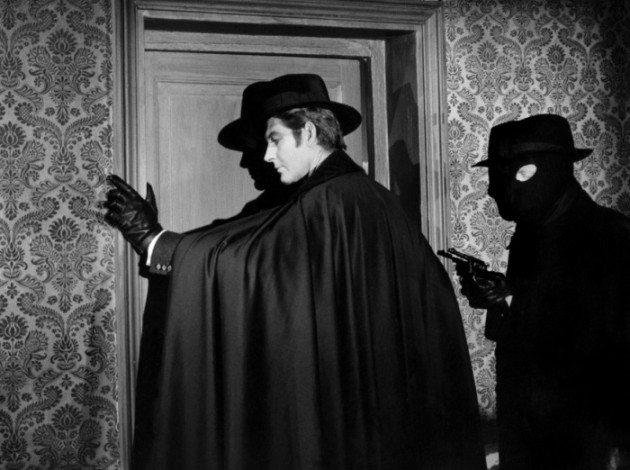
Judex
Unfortunately, I am not able to place a Danish film on my list. I was fortunate to see 27 of the 28 Nordisk films shown at the 25th Giornate del Cinema Muto, in Sacile, Italy, 2006I had watched the only one I missed on a previous occasionbut the 1917 title on display did not appeal to me. Perhaps more than any other film production company in the world, Nordisk was affected the most during World War I. They lost the British and French markets almost immediately, their New York office closed in October 1916, and although their films continued to be well received in Germany, Nordisk’s investments in that country led to the company’s downfall when the German film industry was nationalized in December, 1917. Nordisk production of fiction films (mostly shorts) declined from a peak of 143 in 1914 to 121 in 1916, down drastically to 60 in 1917, and to 45 in 1918.5 5 Nevertheless, I am happy to include two films from Sweden, where creative film production was on the rise. Tösen från Stormyrtorpet (The Girl from the Marsh Croft aka “Girl from Stormy Croft”) was the first film adaptation of a novel written by the Nobel laureate Selma Lagerlöf, whose work became the basis for some more of the greatest Swedish films. Typically for Sjöstrom, The Girl from the Marsh Croft not only features exquisite landscape cinematography, but also clever use of lighting on interior sets (a.d., Axel Esbensen) by the great Henrik Jaenzon, who was surely the finest cinematographer of his generation in the world. Helga (Greta Almroth) is a poor young woman who had been seduced (perhaps, raped) by a much older married man, and consequently conceives his baby, only for him to deny being the father. The village people ostracize Helga, but Gudmund (Lars Hanson) who is engaged to the magistrate’s daughter, Hildur (unusually for actress Karin Molander, she is a very unsympathetic character), believes Helga’s story. Visually there is a strong contrast between Hildur’s rich house on the hill and Helga’s modest, neat home, surrounded by natural, overgrown vegetation, the interior of which enlightens as her hopes brighten. Gudmund’s parents also believe Helga and employ her as a maid, when nobody else will, and in their house she is often framed in the background of tableau compositions, or in her tiny room behind a door. It is a beautiful film at the end of which the characters of both Helga and Gudmund (who was falsely accused of murder in a drunken brawl) are redeemed.
I had first seen Thomas Graals Bästa Film (… Best Film) on 35mm in May 2002 during a Mauritz Stiller retrospective at the Cinémathèque Québécoise, but I was happy to see it again in Bologna on what is considered to be the only accurate 35mm print, taken from a black and white duplicate negative in 1976, off a BFI tinted nitrate print, with missing scenes inserted that had been found in 2003. Following on the reflexive tendencies of Wild and Woolly and A Girl’s Folly, Thomas Graal’s Best Film is even stronger in this regard, with Sjöström, who was already a notable film director, playing the screenwriter and aspiring director, Graal. (I believe that the term “self-reflexive” is normally overdetermined, but here, it works.) Sjöström’s character is infatuated with his secretary, Bessie (played by the much younger Karin Molander), and when she tells him a story of her poor upbringing, while they take a ferry, he imagines a great script project with her acting out this version of her life in it. By intercutting Bessie’s real life story during the ferry ride Stiller’s film shows her own account to be untrue: her father is not a gatekeeper who keeps beating his wife and daughter, but a very rich man who keeps trying to bring her back home, away from the clutches of Gaal, and an inappropriate career in film. Before Lubitsch in 1920s Hollywood (e.g., The Marriage Circle, 1924), Stiller was the master of bourgeois situation comedies. Indeed, one could term Thomas Graal’s Best Film a “screwball comedy,” especially with Graal’s exaggerated gestures —kicking off his shoe that accidentally lands on Bessie’s desk, jumping up-and-down when he gets good news— and with Bessie as an action figure, escaping from home by riding her horse. Like The Girl from the Marsh Croft, … Best Film was produced by AB Svenska Biografteatern, with cinematography by Jaenzon and art direction by Esbensen.
As well as the Borzage and Sjöström-directed films, I saw two other feature films for the first time in 2017 at Bologna, that make my list, Malombra, directed by Carmine Gallone, and starring the great Italian “diva,” Lyda Borelli, and perhaps the most surprising of all, Furcht (Fear), directed by Robert Wiene. Of course Weine is best known as the director of Das Cabinet der Dr. Caligari (1920), and I have always thought that he was probably the most “expressionist” of German film directors for his work on Caligari as well as directing Genuine (1920), Orlacs Hände (Hands of Orlac, 1924), and others. But if anything, Fear, which was made at least two years years before Caligari is a kind-of “impressionist” work in using superimposition to show the ghost of an Indonesian Hindu priest, played by Conrad Veidt, and with realistic (rather than stylized) sets which allow for great depth in staging. Graf Greven (Bruno Decarli) is a German nobleman and orientalist collector, who steals a sacred statue from the priest and kills him. The ghost of his victim haunts Greven, telling him he only has seven days to live, while the rest of the film details the central character’s breakdown, with the ghost moving in the hallways of his mansion, and at one point removing the statue. (I am not sure, exactly, how this particular effect was achieved.) The use of superimposition is extremely impressive for 1917, and towards the end of the film, there is an amazing long take, where Greven is going for a ride in his carriage. The camera pans left and tilts down from his driver atop the carriage, to view Greven entering the coach, and then the camera pans and tilts back up to show that the driver is now the Veidt character! Wiene understood that he could provide the special, ghostly effect in changing the identity of the driver during the time it took to move the camera away and back again. It is a “fantastic” film.
Malombra was introduced passionately by one of the Bologna-based pioneers of Italian film restoration, Nicola Mazzanti, who stressed that it is an example of the “great Italian cinema of the body,” a tendency that has been overlooked in all of the histories of the period. Interestingly, he also commented on how the use of colour (tinting and toning) represents what the characters are feeling, rather than the time of day (e.g., blue for night). Naturally, after hearing this, I paid attention to the colours, and indeed, at times the 35mm print (from a 1996 restoration), combining an Italian and a Uruguayan archival positive nitrate source, was beautiful, with some exterior shots blue toned and sepia tinted. Also in one particular scene, shots of Marina di Malombra (Borelli), playing the piano are tinted pink, while in the library of the same building, a group of men are shown in plain grey, colourless shots. Perhaps the combination of the Italian and Uruguayan source nitrate positive prints yielded a mixture of colour usage, since some shots and sequences are coded by time and place —green day exteriors and a dark blue night interior, switching to brown when a candle is lit— but the inconsistency suggests that a mixture of narrative and emotional causality was used for colouring. In any event, Borelli gave a sensational performance as Marina, especially where she was obsessed with the character of the Countess, Cecilia who had allegedly died as a prisoner in the castle, to such an extent that she virtually becomes her with a dissolve shifting the film into a flashback representation of Cecilia writing at her desk and back to Malina. In the Ritrovato programme notes, Mariann Lewisnky writes: “The first reel ends with one of the most impressive scenes of this film and any diva film: Marina di Malombra/Lyda Borelli unties her hair, lets herself be possessed by madness —or is it Cecilia’s spirit?— wraps her face in her streaming hair, her deranged expression changing her appearance into that of a Maenad [female followers of Dionysius, the “raving ones”], and finally, she faints and falls to the ground.” 6
The last but not least of my European film choices is Za Sčast’em (Towards Happiness, aka “For Luck”), the final film of director Evgenij Bauer. In fact he died following an injury he sustained in the Crimea while shooting this film. I first saw For Luck, as the title was translated then, on a VHS tape (volume 10 of Milestone’s “Early Russian Cinema” series) entitled fittingly “The End of an Era.” After the revolution in October/November 1917, Russian feature filmmaking virtually disappeared until the resurgence of Soviet cinema in the early 1920s. Although my first viewing of the film in 1996 was before high definition television, and not on a good copy, I was struck by the great photography (by Boris Zavalev) of sets (by Lev Kuleshov, the pioneer of Soviet montage), with the frame often being broken up with the camera looking through an archway or an elaborate screen, and with imaginative staging in depth. Now that I have seen a 35mm print of this relatively short film —34 mins. @ 18fps— I am persuaded that Towards Happiness is one of the very best examples of what Bordwell terms tableau staging in the “pyramidal playing space,” especially the scene filmed on and from the porch of the lavish Yalta seaside home, where at one point, the rich widow Zoya Verenskaya (Lidiya Koreneva) and her lawyer, Dmitry (Nikolai Radin) are seen through the bushes (as an aperture) while her daughter, Lee (Tasya Borman) who is going blind, sits in the foreground with a young suitor, Enrico, an artist played by Kuleshov. Lee doesn’t know that her mother is betrothed to Dmitry, whom she also loves.7 7 The complex intrigues are also played out compositionally and in depth in the house, the garden and on the rocks washed by the Black Sea.
If I were to include a 12th film, it could well be John Collins’ Girl Without a Soul (Metro) with a fine double performance (good and bad sister) by his wife Viola Dana, great outdoor cinematography (John Arnold), and with a terrific pace. But, I will include the same director’s Blue Jeans (Metro), released in December as my 11th selection. This film also stars Dana as June, a tough young woman, who first appears wearing blue jeans, and which features the definitive last minute rescue, by June of her hero, Perry (Robert Walker) from a sawmill. Together with Collins, the scriptwriters, June Mathis and Charles A. Taylor enhanced the role of the heroine and eliminated the comedy associated with stereotyped country folk from the source 1890 play written by Joseph Arthur. Blue Jeans also features magnificent photography (by Arnold and William H. Tuers), and astute editing (uncredited, but presumably attributed to the director, himself). Blue Jeans was included, along with The Immigrant and Wild and Woolly in a seminal series of silent films made between 1913 and 1918, shown at the Walker Art Center, Minneapolis, in 1976, under the title “The Rivals of D.W. Griffith: Alternate Auteurs,” and on the evidence of these two Collins-directed films from 1917, he already had a better flair for action/(melo)drama than his mentor
Featured image from Wild and Woolly
Links
Cinemetrics, Barry Salt. http://www.cinemetrics.lv/satltdb.php
Bordwell’s video lecture: http://www.davidbordwell.net/blog/2013/01/12/what-next-a-video-lecture-i-suppose-well-actually-yeah/
Notes
- Patrick Robertson, The Guinness Book of Movie Facts and Feats, 4th edition (Enfield, Middlesex: Guinness publishing Ltd., 1991 [1980]), pp. 1415. ↩
- I conducted all of my measurements on 16mm prints using a Steenbeck viewing machine, which measured the length in feet (and counted frames). Therefore, it was easy for me to be completely accurate (as long as I was working with a full-length print). Salt never declares the frame rate that he uses. Rather he declares that "silent films are calculated at the projection speed that gives natural movement." It is not clear what frame rates Tsivian and others used, including the late Gunars Civjans who designed the _Cinemetrics_ tool. ↩
- Notes taken in the projection booth at 670 Waverly Place, 18 October 1978. In his chapter for 100 Years of Nordisk Film (see below), David Bordwell notes that Reaching for the Moon has “an astonishing three-second average [shot length].” In “Nordisk and the Tableau Aesthetic,” p. 93. ↩
- Judex: A Serial in Twelve Episodes [and a Prologue], 2-DVD Deluxe Edition: Flicker Alley, FA 0002 (2004), 5 hr., 15 min. B&W tinted.. ↩
- See, Lisbeth Richter Larsen and Dan Nissen, “100 Years of Nordisk Film,” in 100 Years of Nordisk Film, Richter Larsen and Nissen, eds. (Copenhagen: Danish Film Institute, 2006), pp. 8-51. ↩
- Mariann Lewinsky, in Il Cinema Ritrovato, XXXI edizione: Bologna 24 giugno – 2 luglio, 2017, Catalogue, supervising editor, Gian Luca Farinelli, p. 74. ↩
- See, the second half of Bordwell’s video lecture
link below“How Motion Pictures Became the Movies,” and “The Cinematic Playing Space,” in Figures Traced in Light: On Cinematic Staging (Berkeley: University of California Press, 2005), pp.62-63. ↩




